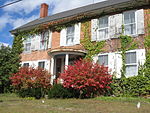Lebanon, New Hampshire
1761 establishments in New HampshireCities in Grafton County, New HampshireCities in New HampshireLebanon, New HampshireLebanon micropolitan area ... and 3 more
New Hampshire populated places on the Connecticut RiverPopulated places established in 1761Use mdy dates from July 2023

Lebanon locally is the only city in Grafton County, New Hampshire, United States. The population was 14,282 at the 2020 census, up from 13,151 at the 2010 census. Lebanon is in western New Hampshire, south of Hanover, near the Connecticut River. It is the home to Dartmouth–Hitchcock Medical Center and Dartmouth College's Geisel School of Medicine, together comprising the largest medical facility between Boston, Massachusetts, and Burlington, Vermont. Together with Hanover, New Hampshire, and White River Junction, Vermont, Lebanon is at the center of a Micropolitan Statistical Area, encompassing nearly 30 towns along the upper Connecticut River valley.
Excerpt from the Wikipedia article Lebanon, New Hampshire (License: CC BY-SA 3.0, Authors, Images).Lebanon, New Hampshire
School Street, Lebanon
Geographical coordinates (GPS) Address Nearby Places Show on map
Geographical coordinates (GPS)
| Latitude | Longitude |
|---|---|
| N 43.641666666667 ° | E -72.25 ° |
Address
School Street 3
03766 Lebanon
New Hampshire, United States
Open on Google Maps



